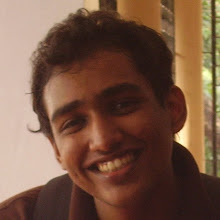The experience has been fruitful. We learned a lot about the design, manufacturing, assembly and testing of various aircraft engines like Adour, Artouste, Orpheus, DART etc. Hey, its not often that you're let into a highly protected defense establishment and get to study it from top to bottom. Sadly though, no pictures, as no electronic devices of any sort are allowed on the premises.
The aircraft manufacturing industry is set for a leap, with the demand vastly outweighing the supply all over the world. Walchand Hirachand, the visionary Indian businessman, saw the revolution in the aerospace industry and set up Hindustan Aeronautics as early as 1940. The Indian Government later took up the venture, and HAL began licensed production of aircraft from many famous names: including Rolls Royce, GE and TurboMeca.
Sadly though, thats all they're doing now also. Though the equipment and personnel are world-class, almost no new development takes place there, from what we could see in the few days that we were there. There are manufacturing equipment in the engine division which can rival any aircraft manufacturing plant worldwide. But the development of the Kaveri engine, India's first truly indigenous Jet Engine, has been going on for over 15 years now.
On the bright side, I saw in this plant the practical implementation of almost all the Engineering principles I had learnt in my three years of study. Heat Treatment, Machining, Material Testing, Metrology, Quality Control, Process flow... it had everything I hoped for. Its quite a treat to see an aircraft engine being tested from maybe 15 meters away !! What impressed me most was the precise system that was in place to ensure the flow of the raw materials to the manufacturing positions, and the manufactured parts to assembly, and the assembled engine to testing. Every movement of a block of lead or steel, from the raw materials depot to the tested engine, was tracked on its very own process chart.
Apart from manufacturing new aircraft engines, they do overhauling also. Overhauling, in aircraft engines, have to be done more often, and extensively. Each and every bolt, nut and washer in an engine is taken out and checked for a number of quality parameters, and the rejection criteria are very strict. And this is repeated as often as every 150 flying hours for some engines !! Of course, it is not like you can park a stalled aircraft on the edge of the cloud and call a mechanic. So they have to be that thourough I guess...
I'm off to Delhi on 9th, for a workshop on Robotics...

No comments:
Post a Comment